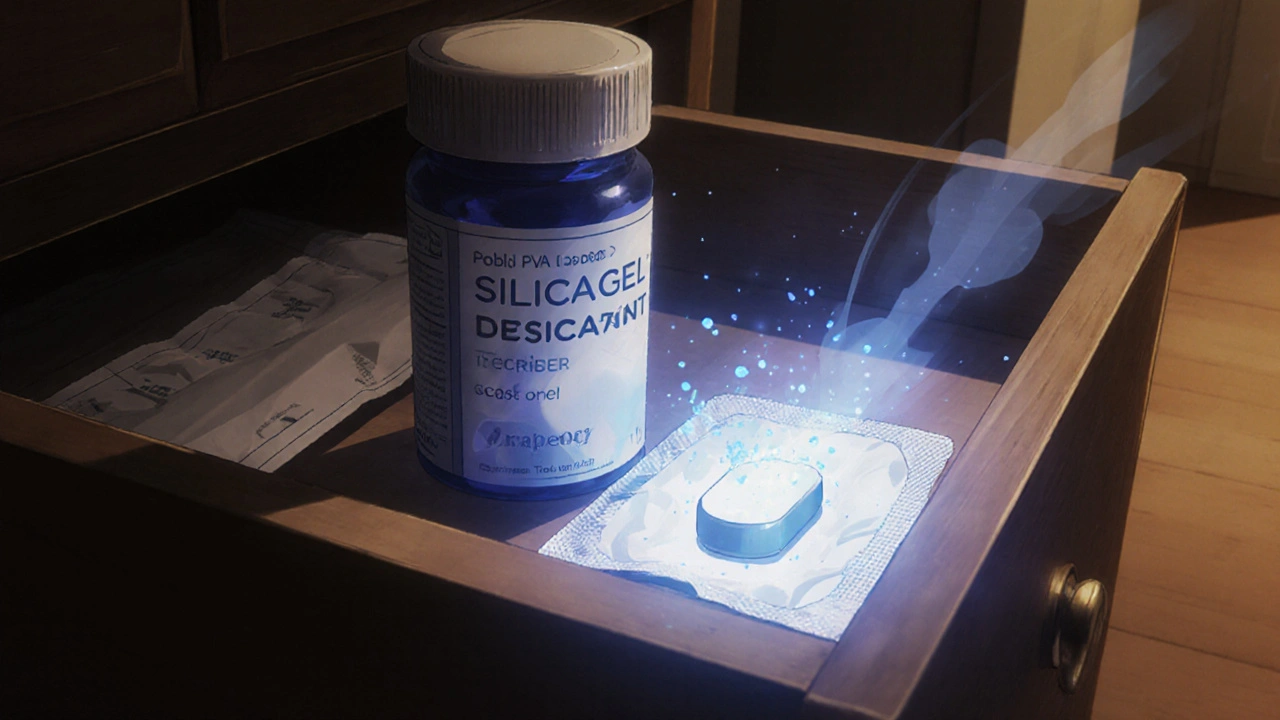Desiccants for Medicine: What They Are and Why They Matter in Drug Safety
When you open a bottle of pills, that little packet labeled desiccants for medicine, substances that absorb moisture to protect pharmaceutical products from degradation. Also known as drying agents, they’re not just packaging filler—they’re critical to keeping your medication safe and effective. Moisture doesn’t just make pills sticky or crumbly. It can break down active ingredients, reduce potency, or even create harmful byproducts. That’s why every bottle of antibiotics, heart meds, or supplements you buy has one—whether you notice it or not.
Most silica gel, a non-toxic, highly porous material commonly used to absorb water in drug containers is the go-to choice. It’s safe, cheap, and works fast. But there are others: clay-based desiccants, molecular sieves, and calcium chloride—each chosen based on the drug’s sensitivity. Biologics like insulin or injectables need tighter control than aspirin, so their packaging might use more advanced types. The wrong desiccant can actually make things worse—some release moisture under heat, or react chemically with the drug. That’s why manufacturers test these pairs like they’re chemical marriages.
It’s not just about the pill inside. pharmaceutical packaging, the containers and seals designed to protect medications from environmental damage matters just as much. A bottle with a tight cap and a desiccant inside is far better than one with a loose lid, even if the packet is there. Think of it like a lock and key: the desiccant handles moisture, but the packaging keeps it sealed in. If you transfer pills to a pill organizer, you’re removing that protection. That’s why many pharmacists warn against it—especially for moisture-sensitive drugs like nitroglycerin or certain antidepressants.
People often toss out those little packets, thinking they’re useless. But if you keep your meds in their original bottles, that packet is doing real work. In humid climates, or during long shipping times, it’s the difference between a pill that works and one that’s gone bad. And it’s not just about expiration dates—some drugs degrade slowly over months, long before the printed date. That’s why pharmacies store bulk meds in climate-controlled rooms with desiccants already built in.
You won’t find this talked about on drug labels, but it’s everywhere in the background. From blister packs to vials of injectables, desiccants for medicine are silent guardians. They’re why your insulin doesn’t clump, why your antibiotics stay potent, and why your thyroid pills don’t turn to powder. Skip them, and you’re gambling with your treatment’s effectiveness.
Below, you’ll find real-world examples of how moisture control impacts drug safety—from how certain medications react in humid conditions to why some pills fail even before their expiration date. These aren’t theory pieces. They’re based on actual cases, pharmacy practices, and what manufacturers won’t always tell you.
How to Prevent Moisture Damage to Pills and Capsules: A Practical Guide for Safe Storage
Moisture can destroy pills and capsules, making them ineffective or dangerous. Learn how to protect your medication with simple storage tips, the role of desiccants, and what packaging actually works.

